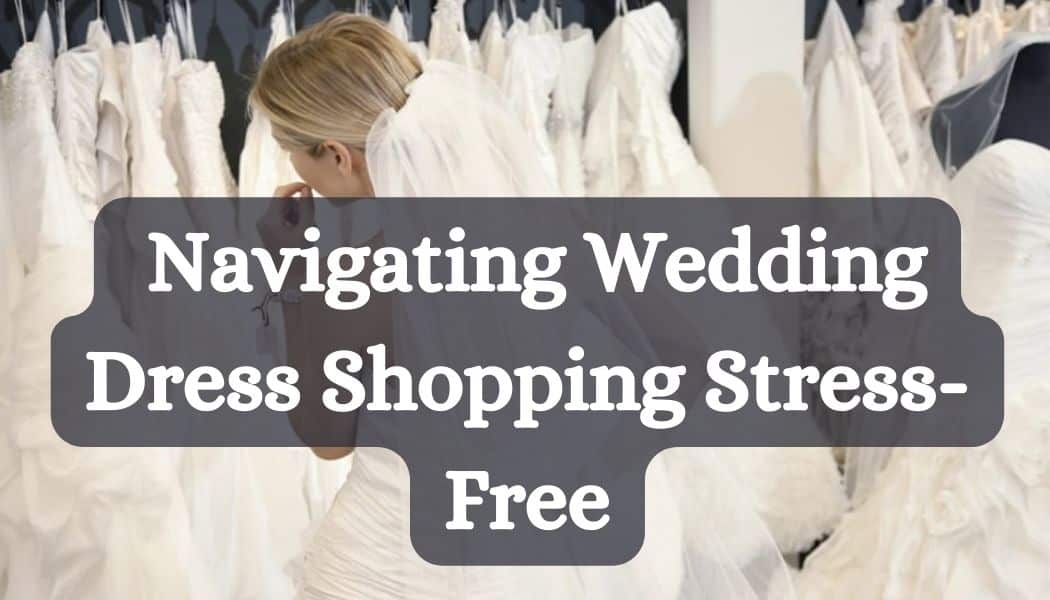
While wedding dress shopping in Toronto, the quest can feel like a rollercoaster ride with high-speed loops and gut-dropping plunges. Don’t sweat it, darling! I’ve got your back. Together, we’ll navigate the wild world of Toronto wedding dress shopping with this trusty guide. Ready to dive in? Let’s do this!
Do you know that ear-to-ear grin plastered on your face since you said “Yes!”? That’s the unmistakable glow of an engaged woman. And what comes after the tears, the cheers, and the mandatory hundred engagement ring selfies? The heart-pounding, dream-drenched hunt for THE perfect wedding dress, of course!
Now, I know what you’re thinking, “Exciting, but oh, the horror!” One minute you’re floating on cloud nine, excitedly flipping through bridal magazines, and the next, you’re knee-deep in tulle and satin, drowning in a sea of white, ivory, and eggshell, wondering why there are fifty shades of white! Seriously, who knew?
Table of Contents
Understanding Wedding Dresses: The Basics
Before setting foot in a bridal boutique, you must know about wedding dresses. This is the first step towards ensuring a stress-free shopping experience. Wedding dresses are as unique as the brides who wear them. Each element contributes to crafting a stunning and personal garment, from the silhouette to the fabric.
Different Wedding Dress Silhouettes
The silhouette of a wedding dress is perhaps its most defining feature. It’s the dress’s shape on your body, and understanding different silhouettes can help you identify what might suit you best.
The classic A-line silhouette, characterized by its fitted bodice and gradually flared skirt, is known for its universality, flattering almost any body type. With its dramatic full skirt and fitted bodice, the Ball gown silhouette exudes a fairytale-like charm. On the other hand, mermaid and trumpet silhouettes are ideal for those looking to accentuate their curves, hugging the body and flaring out around the knees. The sheath silhouette offers a straight-cut design, hugging close to the body’s natural shape. In contrast, the empire silhouette features a high waistline that falls into a loose-fitting skirt, an excellent choice for petite brides or those looking for comfort without sacrificing elegance.
Wedding Dress Fabrics
The choice of fabric can drastically alter the look and feel of a wedding dress. The range of fabrics is vast, from classic Satin to soft, ethereal tulle. Understanding each fabric’s unique characteristics can help brides make informed decisions that match their style and wedding theme.
With its smooth, glossy finish, Satin exudes classic elegance and is versatile enough to fit various dress styles. Lace, imbued with a romantic allure, adds a touch of delicate sophistication to any dress. For brides looking for lightweight options, chiffon is an airy fabric known for its light weave and slightly transparent nature, perfect for summer weddings or beach ceremonies. Tulle, similar to chiffon, is light and airy but offers more structure, making it the go-to fabric for fairy-tale ball gown skirts or whimsical veil details.
Wedding Dress Shopping
Now, armed with a basic understanding of wedding dresses, we delve into the core of the matter – the process of wedding dress shopping. How can you ensure this journey is stress-free and enjoyable?
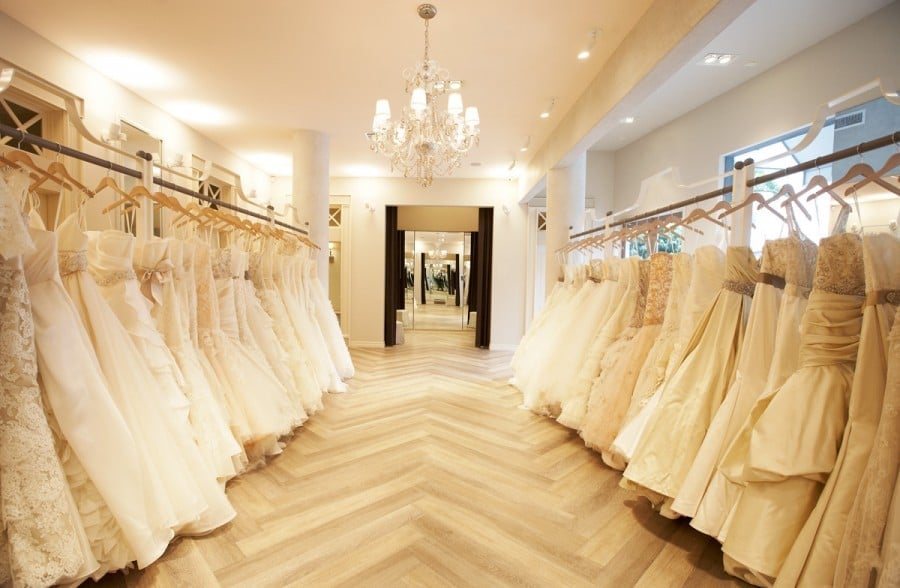
Start Early
Patience is a virtue, especially when it comes to wedding dress shopping. Starting early gives you ample time to explore your options without feeling rushed. Ideally, begin the process 9-12 months in advance. This time frame allows you to browse different boutiques, try on various styles, and once you’ve found ‘the one,’ allow time for fittings, alterations, and any customizations.
Set a Budget
Financial strain is a common stressor in wedding planning. To avoid this, set a budget before stepping into a bridal boutique. This budget should account not just for the gown itself but also for accessories, alterations, and sometimes even the cost of preservation after the big day. A clear budget will guide your shopping process and prevent you from falling in love with a dress beyond your means.

Selecting Your Bridal Shop in Toronto: What to Look for
Toronto boasts many bridal shops, each offering a unique selection and shopping experience. So, how do you choose the right one for you?
Range of Dresses
One of the primary factors to consider is the range of dresses a shop offers. A more comprehensive selection of styles, designers, and sizes means a higher probability of finding a dress that ticks all your boxes. Check the shop’s website or call to get a feel for their collection before visiting.
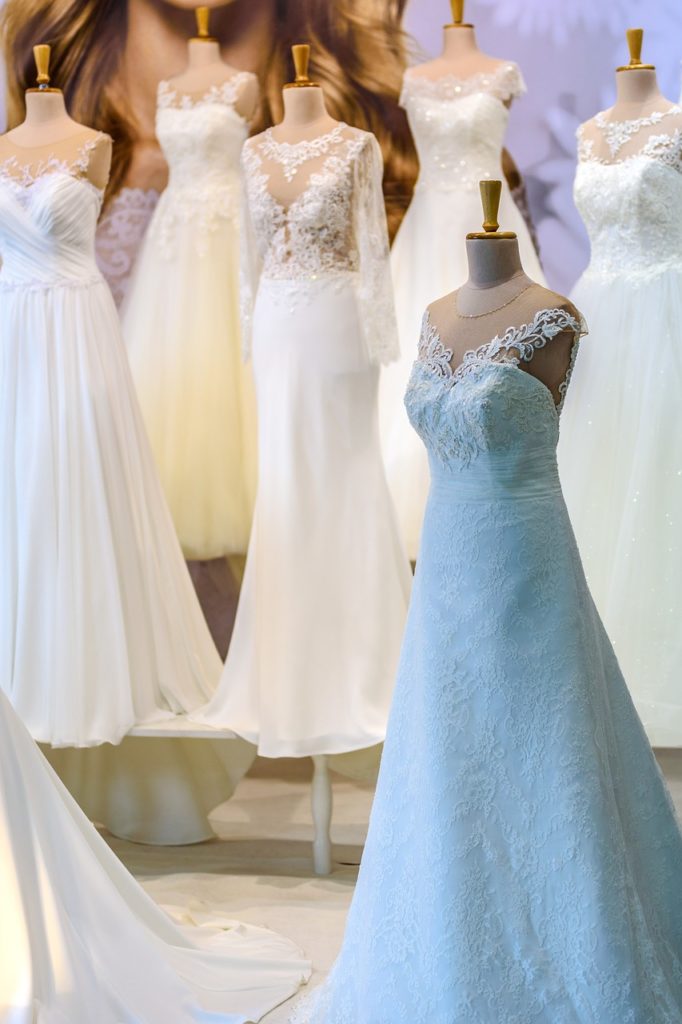
Quality Customer Service
The wedding dress shopping experience should be as beautiful as the dress itself. Excellent customer service is critical to this. The bridal shop staff should be knowledgeable, respectful, and patient, guiding you through the process and considering your preferences, budget, and concerns. They should be as committed as you are to finding your dream dress.
Making the Most of Fitting Sessions
When the day arrives to try on dresses, it can feel both exciting and nerve-racking. Here are a few tips to make the most of your fitting sessions.
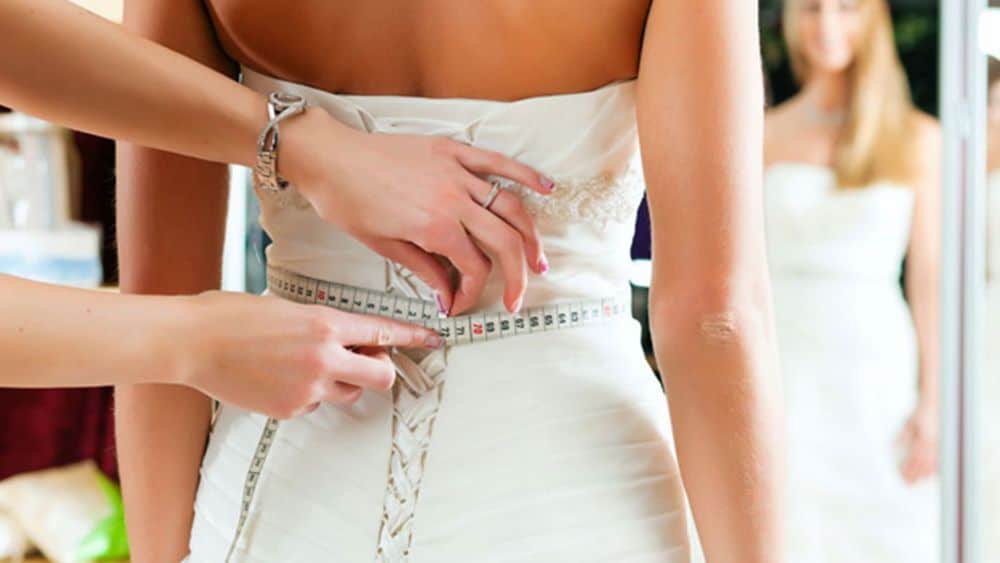
Who to Bring
While bringing along a large group for this milestone moment might be tempting, too many opinions can lead to confusion and stress. Limit your entourage to one or two people whose opinions you trust and who understand your style.
What to Wear
The proper undergarments can make a significant difference in how a dress fits and looks. Opt for nude, seamless undergarments and a strapless bra. Additionally, bring a pair of shoes with a heel height similar to what you plan on wearing on your wedding day. This will give you a more accurate idea of how the dress will look and feel.
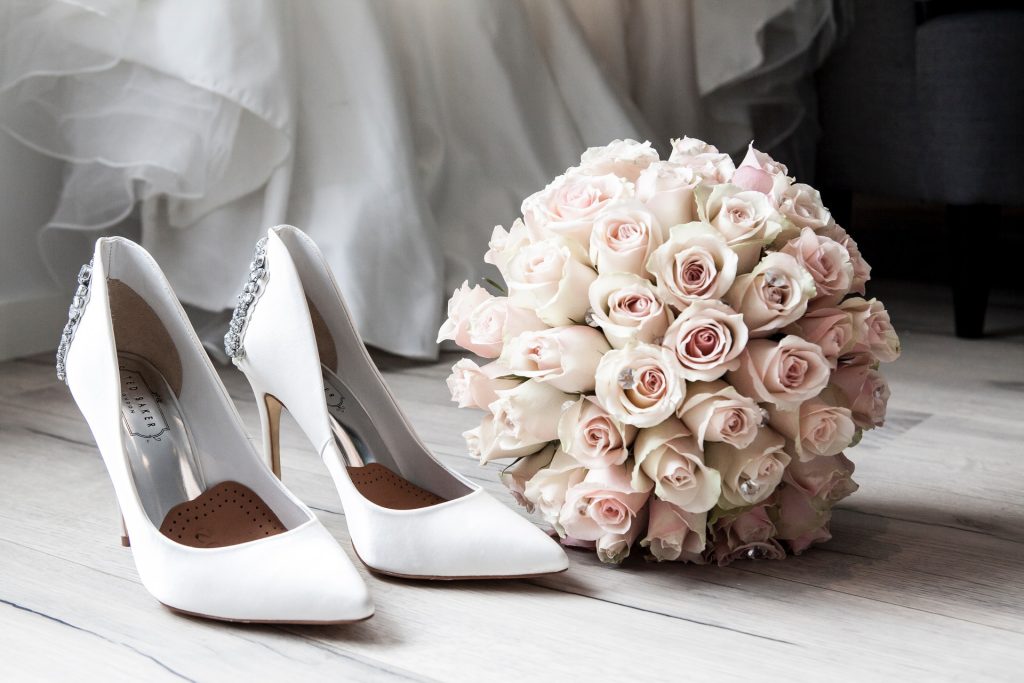
Post-Purchase: The Next Steps
After the joy and relief of finding your dream dress, there’s a sense of accomplishment. Yet, the journey isn’t quite over. A few critical steps remain to ensure that your dress is perfect for your walk down the aisle and beyond.
Alterations: Crafting the Perfect Fit
While finding the dress is a significant milestone, alterations are often necessary to ensure that your dress fits you like a glove. No two bodies are the same, and alterations ensure your dress is tailored to your unique shape, offering a better look and greater comfort.
Your first fitting should ideally be scheduled about 4-6 months before your wedding. Here, the seamstress will assess the fit of the dress and discuss any modifications needed. These alterations may involve adjusting the length, taking in or letting out the bodice, or adding custom elements like bustles (particularly important for gowns with long trains).
Your final fitting should be scheduled about 2-3 weeks before the wedding. This fitting ensures that the dress fits perfectly after all alterations. Remember, it’s not just about standing in the dress – walk, sit, dance, and move around to ensure that you’re comfortable and that the dress moves with you. This will ensure plenty of time for any last-minute adjustments, so on your wedding day, all you need to worry about is savouring every precious moment.
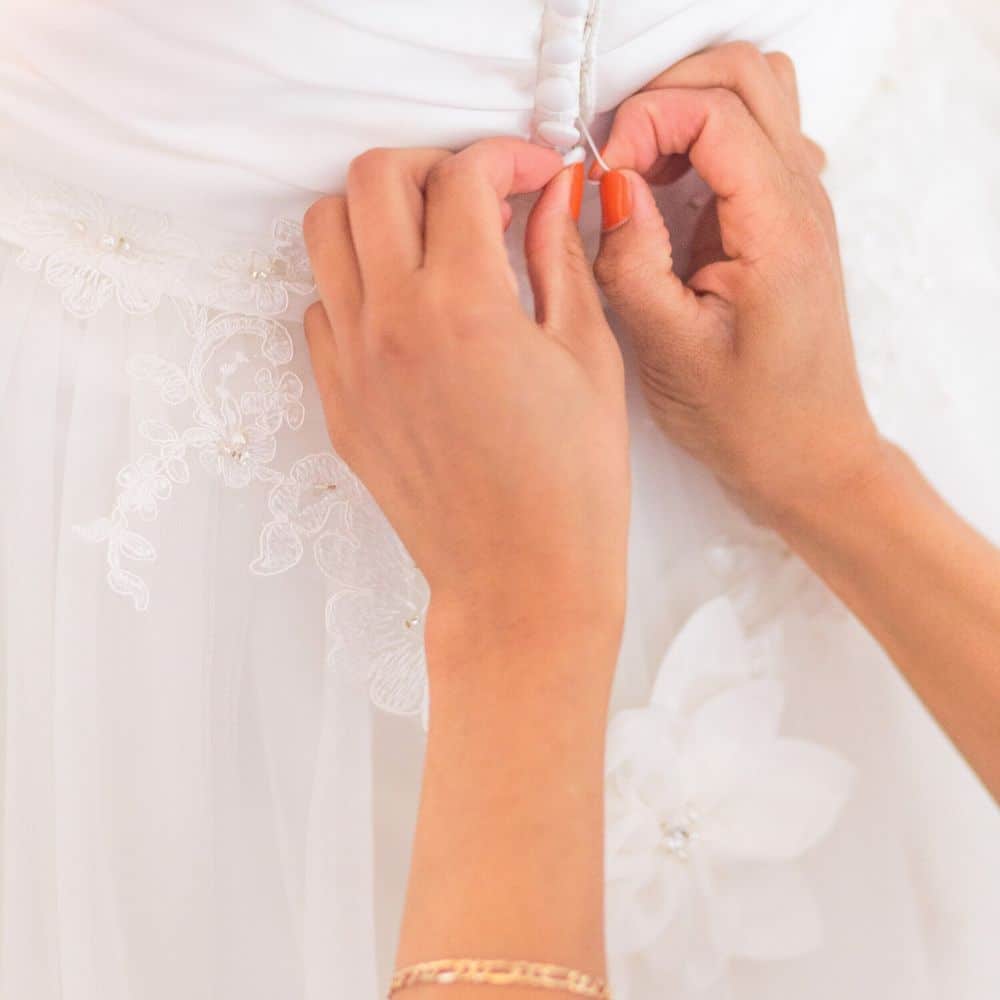
Preservation: Maintaining Your Dress Beyond the Big Day
Once your big day has come and gone, and the memories have been made, your dress serves as a precious keepsake of your special day. Consider cleaning and preserving your dress professionally to ensure it stands the test of time.
Even if your dress doesn’t look soiled, invisible stains like sweat, oils, or food and beverage spills can damage the fabric over time. Professional cleaning ensures these are adequately removed, maintaining the integrity and colour of your dress.
Preservation goes one step further by treating your dress with unique solutions to prevent yellowing and fabric degradation. Your dress is then carefully packaged, often in acid-free tissue paper and a special box that shields it from light and dust.
Preservation is an investment in the longevity of your dress, whether you plan on selling it, donating it, or keeping it as a keepsake, perhaps for a future daughter or granddaughter. By preserving your dress, you’re preserving a piece of your personal history, a memento of your love story and the day you said: “I do.”
Summary: Toronto Bride’s Wedding Survival Guide
- Preparation is Key: Start your dress hunt with clear ideas about your style, body type, and budget. Research and gather inspiration from social media, bridal magazines, or TV shows.
- Timing Matters: Start shopping 9-12 months before your wedding to allow ample time for fitting and alterations. Dresses often take 4-9 months to be made and shipped.
- Setting a Budget: Determine a clear budget for your dress, considering additional costs for accessories, alterations, and preservation.
- Selecting Your Bridal Shop: Choose a bridal shop in Toronto with a wide range of dresses, designers, sizes, and high-quality customer service.
- Making the Most of Fitting Sessions: Limit your entourage to trusted individuals, wear appropriate undergarments and shoes, and keep an open mind when trying dresses.
- Alterations: Schedule your first fitting about 4-6 months before your wedding and the final about 2-3 weeks before. This ensures plenty of time for necessary adjustments.
- Preservation: After your wedding day, consider cleaning and preserving your dress to maintain its condition.
- Enjoy the Process: Remember, finding your dream dress should be a joyous journey. Embrace each moment and cherish the memories you create along the way.
FAQ: Wedding Dress Shopping Stress-Free
When should I start shopping for my wedding dress?
Ideally, start shopping 9-12 months before your wedding. This allows ample time to try different styles, place your order, and schedule necessary fittings and alterations.
How many people should I bring to my fitting session?
Limit your entourage to one or two people whose opinions you trust and who understand your style.
What should I wear to my fitting session?
Wear nude, seamless undergarments, a strapless bra, and shoes with a similar heel height to what you plan to wear on your wedding day.
How many dresses should I try on?
There’s no set rule. Some brides find ‘the one’ after trying just a few, while others may need to try on dozens. Trust your instincts.
What’s the average cost of a wedding dress in Toronto?
The average cost ranges from $1,000 to $2,500, with designer gowns costing more. Remember to account for additional costs like accessories and alterations.
Conclusion
Finding your dream wedding dress should be an exciting, joyous journey. This Toronto Bride’s Survival Guide allows you to navigate the process stress-free. Remember, the journey is just as beautiful as the destination. Embrace each moment, for these memories will last a lifetime alongside the perfect dress you’ll find.


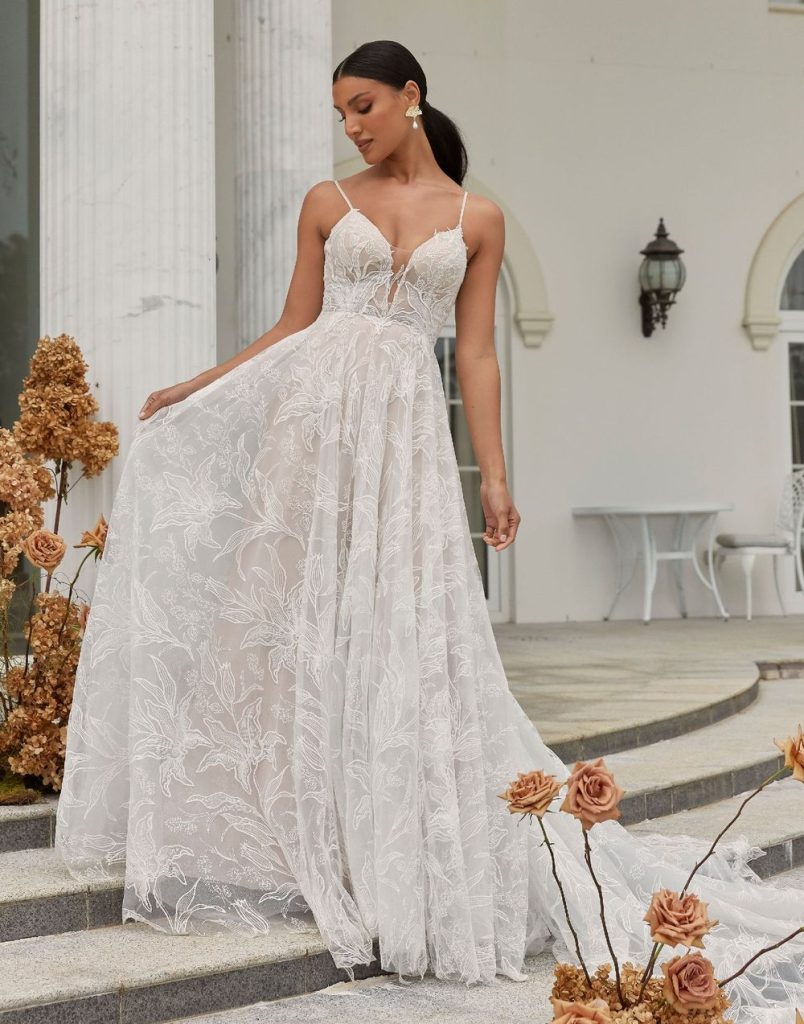





![Celebrity-Inspired Wedding Dresses from the Red Carpet to the Aisle [2024]](https://i0.wp.com/www.bestforbride.com/bridal-shop/wp-content/uploads/2023/12/Experience-the-Magic-Celebrity-Inspired-Wedding-Dresses-from-the-Red-Carpet-to-the-Aisle.jpg?ssl=1)
![Stay Prepared for Unexpected Last-Minute Wedding Dress Emergencies: 8 Key Scenarios [2024]](https://i0.wp.com/www.bestforbride.com/bridal-shop/wp-content/uploads/2023/12/Stay-Prepared-for-Unexpected-Last-Minute-Wedding-Dress-Emergencies-8-Key-Scenarios.jpg?ssl=1)




